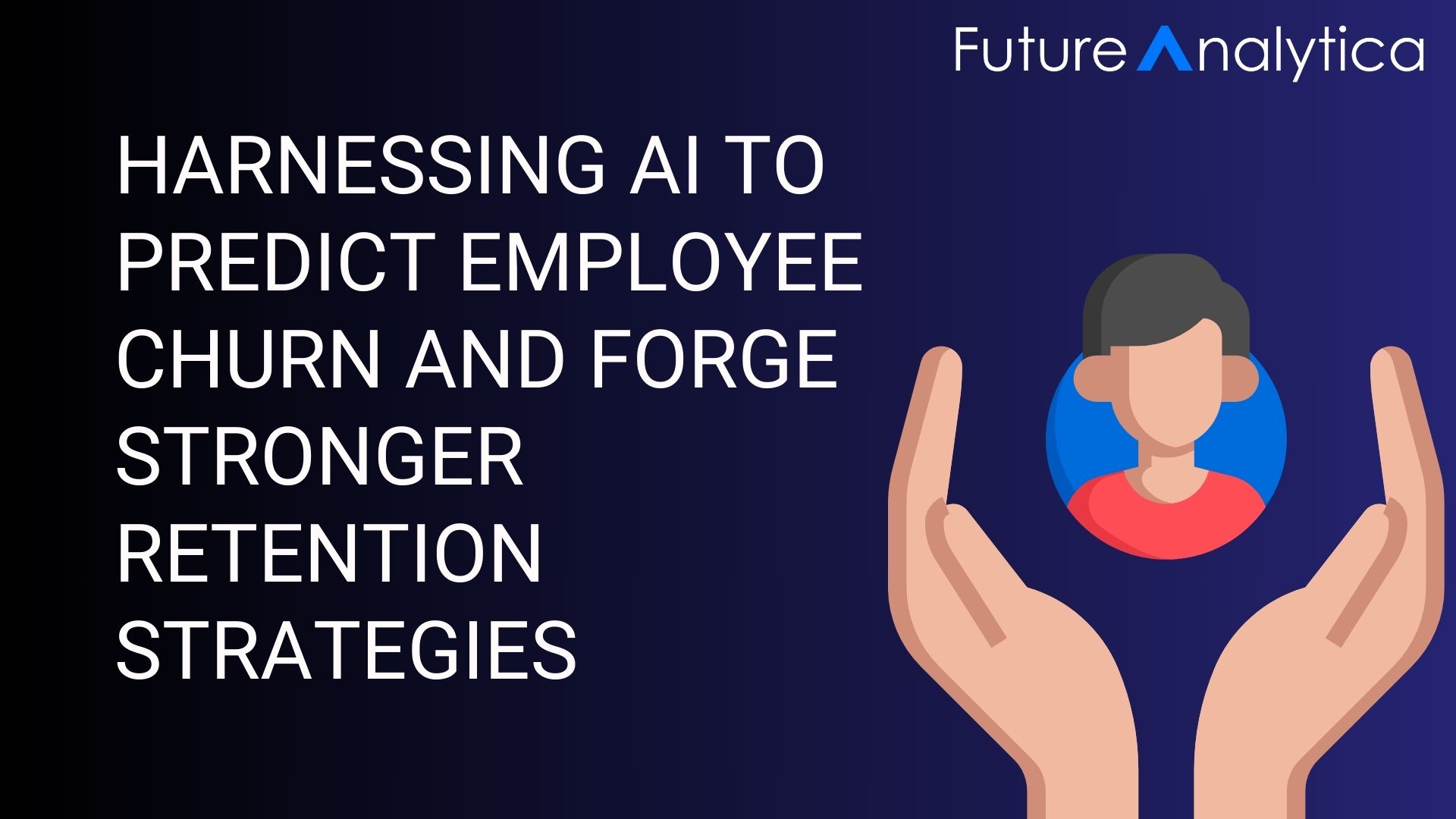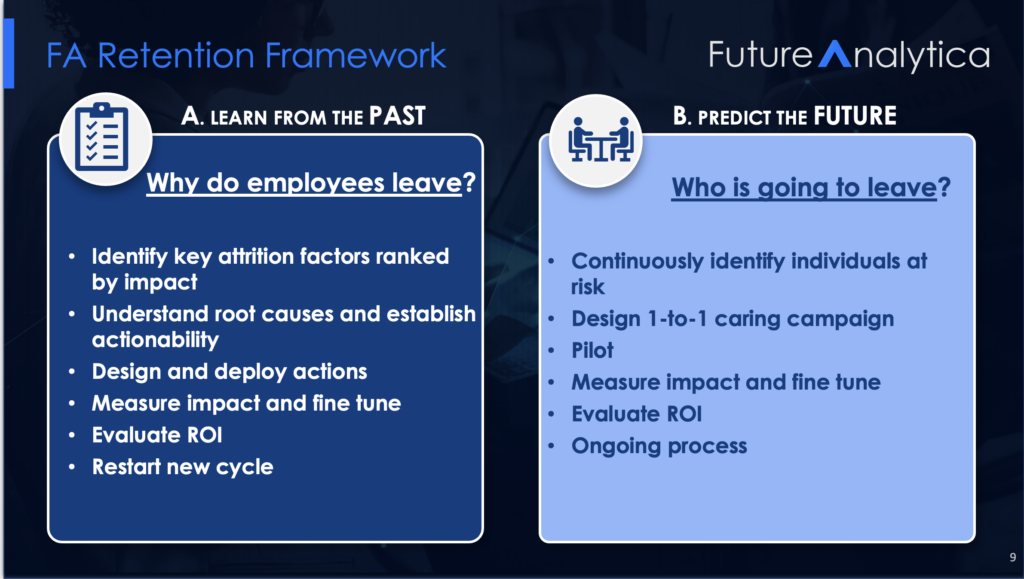Harnessing AI to Predict Employee Churn and Forge Stronger Retention Strategies

The High Cost of Employee Turnover
The Role of AI in Predicting Employee Churn
Understanding Employee Churn Prediction with AI
Aligning with Future Analytica’s FA Retention Framework
Our innovative FA Retention Framework centers on understanding ‘WHY’ employees leave and identifying ‘WHO’ is at risk, underpinned by key milestones:
Learning from the Past: We dive deep into historical data to understand the root causes of turnover, facilitating a strategic action plan that addresses these core issues.
Predicting the Future: With continuous monitoring, we predict potential departures, allowing for timely and personalized interventions.

Advantages of AI in Predicting Employee Churn
- Proactive Retention Strategies: By predicting churn before it happens, organizations can implement personalized retention plans, addressing the specific needs and concerns of at-risk employees
- Reduced Turnover Costs: Early intervention can significantly reduce the costs associated with employee turnover, including recruitment, training, and lost productivity
- Improved Employee Engagement: AI-driven insights can help create a more engaging and satisfying work environment, leading to higher employee satisfaction and loyalty
- Data-Driven Decision Making: AI provides HR with actionable insights based on data, rather than intuition, enabling more effective and strategic decision-making
Key Data Science Differentiators in Future Analytica’s Approach:
Productivity Enhancement: Future Analytica transforms the retention process end-to-end, from data collection to model deployment, ensuring maximum productivity and minimum resource allocation.
Automated Data Transformation: Our cutting-edge platform automates the feature engineering, significantly simplifying data analysis for HR teams.
Zero Code Innovation: We champion a zero-code environment, enabling HR professionals to implement complex AI strategies without technical hurdles.
Modular Approach: Designed to be scalable, our platform meets diverse needs with custom functionality that is robust and adaptable.
Agile AI Pilots: Witness the transformative power of AI in HR with our quick deployment, showing tangible results in as little as 45 days.
Data Science Automation: A Game Changer for HR
Predictive Analytics for Proactive Retention
Benefits of Predictive Analytics in Retention Strategies
- Targeted Interventions: With insights from predictive analytics, HR can tailor retention strategies to address the specific needs and concerns of at-risk employees, making these interventions more effective.
- Improved Employee Experience: By understanding the factors that contribute to employee dissatisfaction, organizations can make necessary adjustments to their policies, work environment, or culture, thereby improving the overall employee experience.
- Cost Savings: Proactively retaining employees can significantly reduce the costs associated with turnover, such as recruitment, onboarding, and training of new hires, as well as the loss of productivity during transition periods.
- Strategic Workforce Planning: Predictive analytics provides valuable insights for long-term workforce planning, helping organizations to anticipate future turnover trends and prepare accordingly.
Success Stories with Future Analytica
Implementing Future Analytica in Your Organization
Ethical Considerations in AI Deployment
A Closer Look at Future Analytica’s Capabilities
To illustrate the capabilities of Future Analytica’s platform, consider the following example:
“Margaret Smith has a 76% likelihood of leaving Acme Company. The top factors influencing why Margaret might leave are as follows:
- She has only received four hours of training this year, and most of her colleagues received 15 hours of training.
- Her manager Bill’s team has a very high turnover rate, which puts her at higher risk of turnover.
- Margaret lives 90 minutes from work, and this is a high commute time for employees at Acme Company.
Further, the Future Analytica platform can make recommendations and tell you how it would affect the attrition score:
- If Margaret receives 11 more hours of training, it will decrease her likelihood of leaving by 12%.
- If Margaret is placed on Jennifer’s team, it will decrease her likelihood of leaving by 8%.
- If Margaret is assigned to the Acme Company satellite office closer to her home, this will decrease her likelihood of leaving by 16%.”
This example demonstrates the platform’s ability to provide personalized insights and actionable recommendations to address specific retention challenges.